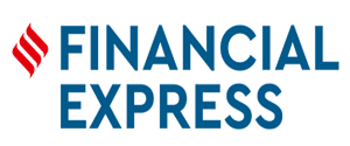The industry insights report of the Clinical Laboratory Services Market in United States - 2022 Edition helps with the successful launch of a new product. This market report efficiently collects, analyses, and evaluates information about a product or service to be offered for sale in that market. This market research report makes it easy to attain customer demographics which form the core of any business. This report studies Potential clients for the product or service and their characteristics, spending habits, location, and needs of its target market. The role of a clinical laboratory is to promptly provide highly reliable laboratory data to satisfy the needs of clinicians involved in medical practice and health maintenance of patients. Publisher estimates the clinical laboratory services market in United States will total USD 116,034 million by 2028, an average annual growth of 3.3 percent during the forecast period, according to the latest edition of the Clinical Laboratory Services Market in United States Report.
What's Inside a Bonafide Research`s industry report?
Asia-Pacific dominates the market and is the largest and fastest-growing market in the animal growth promoters industry globally
Download SampleThe report provides in-depth analysis and insights regarding the current global market scenario, latest trends and drivers into clinical laboratory services market in United States. It offers an exclusive insight into various details such as market size, key trends, competitive landscape, growth rate and market segments. This study also provides an analysis of the impact of the COVID-19 crisis on the clinical laboratory services industry. The clinical laboratory services market is segmented on the basis of service provider. The clinical laboratory services market is segmented as below: By service provider: - independent laboratories - hospital laboratories
The report also provides analysis of the key companies of the industry and their detailed company profiles including ARUP Laboratories, EXACT Sciences Corporation, Laboratory Corporation of America Holdings (Labcorp), Myriad Genetics, Inc., OPKO Health, Inc., Quest Diagnostics Incorporated, Sonic Healthcare Limited, among others. *REQUEST FREE SAMPLE TO GET A COMPLETE LIST OF COMPANIES Historical & Forecast Period This research report provides analysis for each segment from 2018 to 2028 considering 2021 to be the base year. Scope of the Report - To analyze and forecast the market size of the clinical laboratory services market in United States. - To classify and forecast the clinical laboratory services market in United States based on service provider. - To identify drivers and challenges for the clinical laboratory services market in United States. - To examine competitive developments such as mergers & acquisitions, agreements, collaborations and partnerships, etc., in the clinical laboratory services market in United States. - To identify and analyze the profile of leading players operating in the clinical laboratory services market in United States.
Why Choose This Report - Gain a reliable outlook of the clinical laboratory services market in United States forecasts from 2022 to 2028 across scenarios. - Identify growth segments for investment. - Stay ahead of competitors through company profiles and market data. - The market estimate for ease of analysis across scenarios in Excel format. - Strategy consulting and research support for three months. - Print authentication provided for the single-user license.
Table of Contents
- Part 1. Introduction
- 1.1 Market definition
- 1.2 Key benefits
- 1.3 Market segment
- Part 2. Methodology
- 2.1 Primary
- 2.2 Secondary
- Part 3. Executive summary
- Part 4. Market overview
- 4.1 Introduction
- 4.2 Market dynamics
- 4.2.1 Drivers
- 4.2.2 Restraints
- Part 5. Clinical laboratory services market in United States, by service provider
- 5.1 Independent laboratories
- 5.1.1 Market size and forecast
- 5.2 Hospital laboratories
- 5.2.1 Market size and forecast
- Part 6. Key competitor profiles
- 6.1 ARUP Laboratories
- 6.2 EXACT Sciences Corporation
- 6.3 Laboratory Corporation of America Holdings (Labcorp)
- 6.4 Myriad Genetics, Inc.
- 6.5 OPKO Health, Inc.
- 6.6 Quest Diagnostics Incorporated
- 6.7 Sonic Healthcare Limited
- *REQUEST FREE SAMPLE TO GET A COMPLETE LIST OF COMPANIES
- DISCLAIMER
- ABOUT GEN CONSULTING COMPANY
Related Reports
 We are friendly and approachable, give us a call.
We are friendly and approachable, give us a call.















